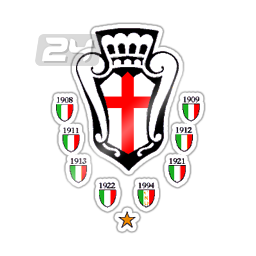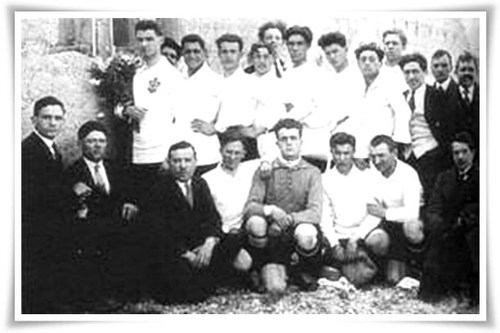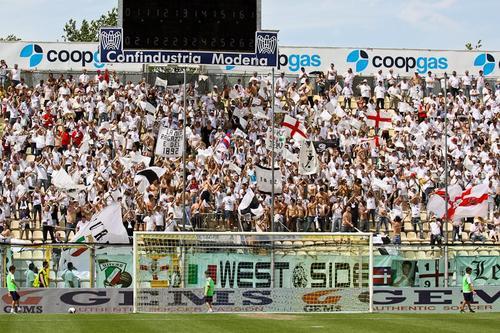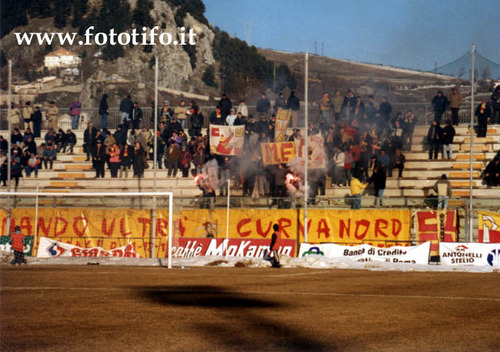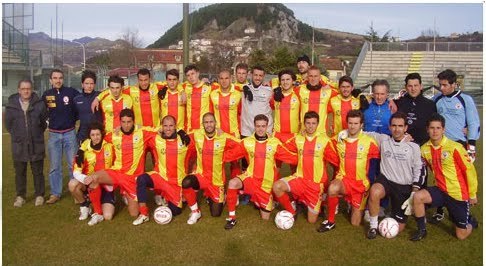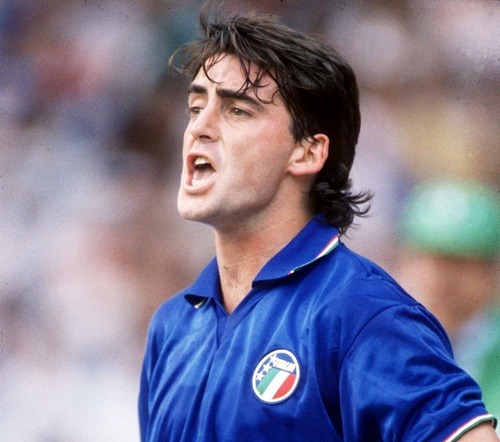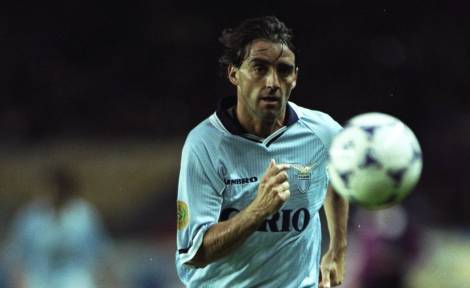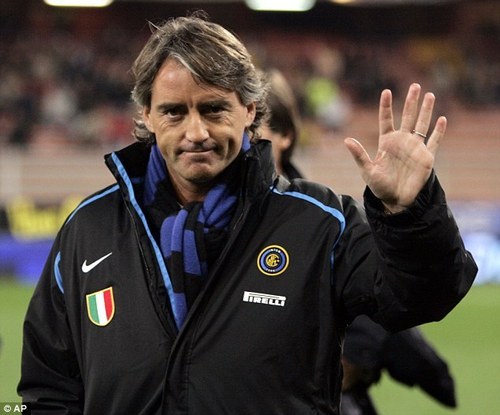May 12, 1985. It’s a date indelibly marked in the minds of all Hellas Verona fans. The tactical nous of coach Osvaldo Bagnoli coupled with the stewardship of president Celestino Guidotti and ex-player turned sporting director Emiliano Mascetti, had ensured Verona reached the pinnacle. May 12, 1985 – the day theGialloblu drew 1-1 in Bergamo and secured their only Serie A title to date.
The Veronesi have always been one of the most vocal, fiercely loyal and controversial set of supporters in Italy. Sitting in the Veneto, a region that traditionally garners support for the more powerful Milan clubs, they and their club revel in their outsider status. But Bagnoli's Verona side in the 1980s were the perfect fit. Players of varying ability, who had spent time on the fringes of larger clubs and had a point to prove, were brought together under a new collective spirit, fostered by Bagnoli through his affable man-management style. Suddenly they had a focus, a work ethic and a sense of belief.
Bagnoli joined Hellas in 1981 after several years managing in the lower leagues with Solbiatese, Como, Rimini, Fano and Cesena. After leaving the Gialloblu in 1990 he went on to coach Genoa and Inter. He took Genoa to fourth in the standings in his first year in charge. It was the Rossoblu’s best finish for more than 50-years. This was a coach who knew how to get the very best out of players and it was his achievements with Verona that truly astounded.
Osvaldo Bagnoli was born on 3 July 1935 in Milan. Raised in a working class neighbourhood he played football in the streets from an early age and made a career as a hard tackling midfielder for Milan, Verona and Udinese in the 1950s and 60s.
Bagnoli was a modest man, who never lost sight of his roots or his beliefs. This led to misunderstandings about his character and ideology. He was viewed as a Communist by none other than Silvio Berlusconi who, reportedly, refused to hire him as AC Milan head coach because of his 'communist beliefs'.
At Verona however, he accomplished the impossible and achieved something that will likely not happen again for a long, long time. He took the Scaligeri from Serie B to the Serie A title in four seasons and also guided them to UEFA Cup qualification in the 1983/84 season. His teams were primarily defensive minded but were capable of producing devastating counter-attacking football. They were often built upon a core of Italians - hardworking, selfless players such as winger Pietro Fanna, midfielder Antonio Di Gennaro and striker Giuseppe Galderisi, who scored 11 goals in Verona’s title winning season and epitomised Bagnoli’s tactical approach. But Bagnoli’s Verona was also supplemented with two exceptional foreign imports – Danish striker Preben Elkjær Larsen and the German defender Hans-Peter Briegel.
As the 1984/85 season began, thoughts of winning the league were far from the minds of all the Veronesi.But as the season wore on, the players responded to Bagnoli’s methods and the side produced some memorable results. A decisive 2-0 win against Juventus was one of the season highlights, in particular the legendary goal ‘without a boot’ scored by Elkjær.
Having embarked on one of his characteristic lung-busting runs down wing, the Dane stripped Juve’s defence for pace only to lose a boot as a result of a flailing last-ditch attempt to stop him from entering the penalty area. Untroubled, Elkjaer maintained his equilibrium – minus a boot – cut inside another floundering Juve defender and stroked the ball past a helpless Stefano Tacconi. If ever a goal encapsulated the ethos of a team and their coach, it was this one. The perfect mix of vigour, persistence and talent.
Other memorable victories followed. A 5-3 away win over Udinese rejuvenated the side as speculation rose the team were losing their grip on the title at the midway point of the season. Then three straight wins, including a hard fought 1–0 victory against a strong Roma served as notice that the team had kept its focus during their rival's final surge. And of course the definitive 1–1 draw in Bergamo against Atalanta, which secured the title with a game in hand.
Bagnoli’s men finished the season with 15 wins, 13 draws and only two defeats. A mean defence conceded only 19 goals in 30 games. Their total of 43-points was enough for them to be crowned champions as they finished four points ahead of Torino with Inter and Sampdoria completing the top four. The European Cup was the prize the following season, but they were knocked out in the Second Round by holders Juventus.
However, their triumph can also partly be attributed to the response of the Italian authorities to the 1980 match fixing scandal that saw Lazio and AC Milan relegated to Serie B. One of the major reforms recommended for Italian football in the wake of the betting scandal was for match officials to be randomly selected to officiate matches. The new way of selection came in to force for the start of the 1984/85 Serie A season.
Beforehand, the suspicion was that the selection process, carried out through an Italian FA committee, always paired the big clubs from Rome, Turin and Milan with favourable officials. In the two decades prior to Verona’s achievement, the title had only left those cities on one occasion.
But undoubtedly one of the most defining factors was Bagnoli. He eHH was a terrific motivator of men, he knew how to get the best out of his players, both individually and as a team. The side had been gradually improving in the seasons leading up to 1984/85 and the signings of Briegel and Elkjær proved to be masterstrokes. In the summer of 1984, Diego Maradona landed in Italy and he joined other big name imports like Michel Platini (Juventus), Karl-Heinz Rummenigge (Inter), Falcao (Roma) and Zico (Udinese). But Briegel and Elkjær upstaged them all. Elkjær chipped in with eight league goals during the season and Briegel scored an incredible nine from defence.
Another remarkable stat about the title winning side was the use of only 17 players throughout the league campaign. Totally unthinkable in today’s modern game, winning the Scudetto with a squad of just 17 players is another reason why a success like Verona’s is unlikely to be repeated any time soon. While the players did the business on the field, Bagnoli prepared them both mentally and physically. He ensured they were always pulling in the same direction and for this he has to take immense credit.
Verona struggled to reach the same heights the following season, finishing a disappointing tenth. They also lost their talisman as Briegel departed for Sampdoria at the end of the 1985/86 season. Fanna headed off to Inter, with Galderisi, Di Gennaro and others all following over the next two years. A fourth place finish, and a return to European competition via the UEFA Cup in 1986/87 hinted at a return to former glories, but in truth, the side was slowly breaking up. Elkjær left at the end of the 1988 season and Verona struggled to finish above mid-table for a couple of years, with relegation inevitably following after a disastrous end to the 1989/90 season. Bagnoli also knew his time was up and left to coach Genoa.
The Veronesi have always been one of the most vocal, fiercely loyal and controversial set of supporters in Italy. Sitting in the Veneto, a region that traditionally garners support for the more powerful Milan clubs, they and their club revel in their outsider status. But Bagnoli's Verona side in the 1980s were the perfect fit. Players of varying ability, who had spent time on the fringes of larger clubs and had a point to prove, were brought together under a new collective spirit, fostered by Bagnoli through his affable man-management style. Suddenly they had a focus, a work ethic and a sense of belief.
Bagnoli joined Hellas in 1981 after several years managing in the lower leagues with Solbiatese, Como, Rimini, Fano and Cesena. After leaving the Gialloblu in 1990 he went on to coach Genoa and Inter. He took Genoa to fourth in the standings in his first year in charge. It was the Rossoblu’s best finish for more than 50-years. This was a coach who knew how to get the very best out of players and it was his achievements with Verona that truly astounded.
Osvaldo Bagnoli was born on 3 July 1935 in Milan. Raised in a working class neighbourhood he played football in the streets from an early age and made a career as a hard tackling midfielder for Milan, Verona and Udinese in the 1950s and 60s.
Bagnoli was a modest man, who never lost sight of his roots or his beliefs. This led to misunderstandings about his character and ideology. He was viewed as a Communist by none other than Silvio Berlusconi who, reportedly, refused to hire him as AC Milan head coach because of his 'communist beliefs'.
At Verona however, he accomplished the impossible and achieved something that will likely not happen again for a long, long time. He took the Scaligeri from Serie B to the Serie A title in four seasons and also guided them to UEFA Cup qualification in the 1983/84 season. His teams were primarily defensive minded but were capable of producing devastating counter-attacking football. They were often built upon a core of Italians - hardworking, selfless players such as winger Pietro Fanna, midfielder Antonio Di Gennaro and striker Giuseppe Galderisi, who scored 11 goals in Verona’s title winning season and epitomised Bagnoli’s tactical approach. But Bagnoli’s Verona was also supplemented with two exceptional foreign imports – Danish striker Preben Elkjær Larsen and the German defender Hans-Peter Briegel.
As the 1984/85 season began, thoughts of winning the league were far from the minds of all the Veronesi.But as the season wore on, the players responded to Bagnoli’s methods and the side produced some memorable results. A decisive 2-0 win against Juventus was one of the season highlights, in particular the legendary goal ‘without a boot’ scored by Elkjær.
Having embarked on one of his characteristic lung-busting runs down wing, the Dane stripped Juve’s defence for pace only to lose a boot as a result of a flailing last-ditch attempt to stop him from entering the penalty area. Untroubled, Elkjaer maintained his equilibrium – minus a boot – cut inside another floundering Juve defender and stroked the ball past a helpless Stefano Tacconi. If ever a goal encapsulated the ethos of a team and their coach, it was this one. The perfect mix of vigour, persistence and talent.
Other memorable victories followed. A 5-3 away win over Udinese rejuvenated the side as speculation rose the team were losing their grip on the title at the midway point of the season. Then three straight wins, including a hard fought 1–0 victory against a strong Roma served as notice that the team had kept its focus during their rival's final surge. And of course the definitive 1–1 draw in Bergamo against Atalanta, which secured the title with a game in hand.
Bagnoli’s men finished the season with 15 wins, 13 draws and only two defeats. A mean defence conceded only 19 goals in 30 games. Their total of 43-points was enough for them to be crowned champions as they finished four points ahead of Torino with Inter and Sampdoria completing the top four. The European Cup was the prize the following season, but they were knocked out in the Second Round by holders Juventus.
However, their triumph can also partly be attributed to the response of the Italian authorities to the 1980 match fixing scandal that saw Lazio and AC Milan relegated to Serie B. One of the major reforms recommended for Italian football in the wake of the betting scandal was for match officials to be randomly selected to officiate matches. The new way of selection came in to force for the start of the 1984/85 Serie A season.
Beforehand, the suspicion was that the selection process, carried out through an Italian FA committee, always paired the big clubs from Rome, Turin and Milan with favourable officials. In the two decades prior to Verona’s achievement, the title had only left those cities on one occasion.
But undoubtedly one of the most defining factors was Bagnoli. He eHH was a terrific motivator of men, he knew how to get the best out of his players, both individually and as a team. The side had been gradually improving in the seasons leading up to 1984/85 and the signings of Briegel and Elkjær proved to be masterstrokes. In the summer of 1984, Diego Maradona landed in Italy and he joined other big name imports like Michel Platini (Juventus), Karl-Heinz Rummenigge (Inter), Falcao (Roma) and Zico (Udinese). But Briegel and Elkjær upstaged them all. Elkjær chipped in with eight league goals during the season and Briegel scored an incredible nine from defence.
Another remarkable stat about the title winning side was the use of only 17 players throughout the league campaign. Totally unthinkable in today’s modern game, winning the Scudetto with a squad of just 17 players is another reason why a success like Verona’s is unlikely to be repeated any time soon. While the players did the business on the field, Bagnoli prepared them both mentally and physically. He ensured they were always pulling in the same direction and for this he has to take immense credit.
Verona struggled to reach the same heights the following season, finishing a disappointing tenth. They also lost their talisman as Briegel departed for Sampdoria at the end of the 1985/86 season. Fanna headed off to Inter, with Galderisi, Di Gennaro and others all following over the next two years. A fourth place finish, and a return to European competition via the UEFA Cup in 1986/87 hinted at a return to former glories, but in truth, the side was slowly breaking up. Elkjær left at the end of the 1988 season and Verona struggled to finish above mid-table for a couple of years, with relegation inevitably following after a disastrous end to the 1989/90 season. Bagnoli also knew his time was up and left to coach Genoa.
His coaching career came to a close in 1994 after a short, unsuccessful stint at Inter where, as he later admitted, he earned a decent enough pension to allow him to retire at the age of 59. He still lives in the hills outside of Verona.
Referring to his coaching philosophy, Bagnoli once said "Football is a simple game. The important thing is to be lucky enough to find the right people to then put them in the right places; leaving them free to express themselves."
30-years ago, he found exactly the right people and put them in exactly the right places at Verona.
@insearchofluca
Referring to his coaching philosophy, Bagnoli once said "Football is a simple game. The important thing is to be lucky enough to find the right people to then put them in the right places; leaving them free to express themselves."
30-years ago, he found exactly the right people and put them in exactly the right places at Verona.

